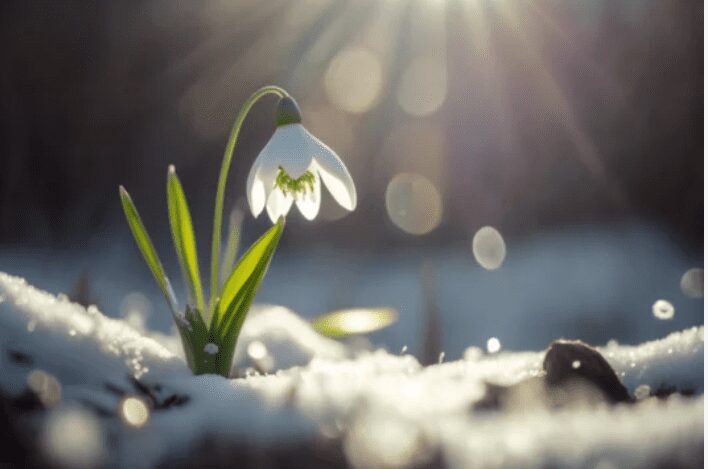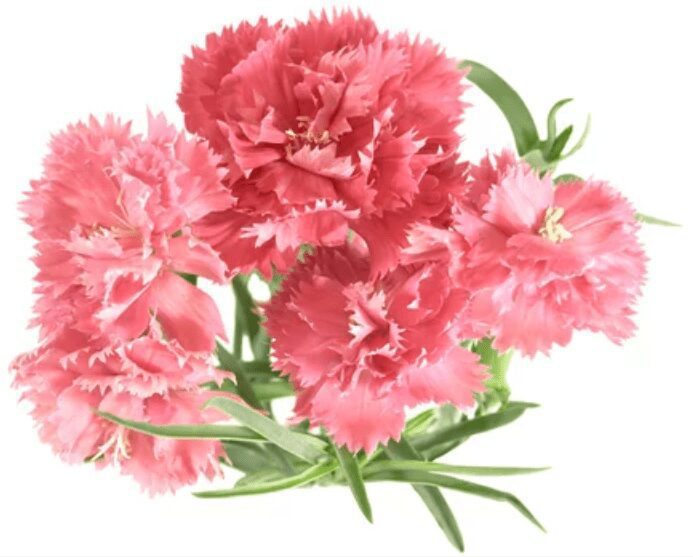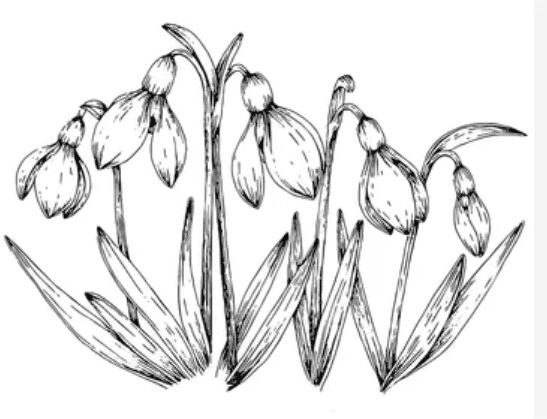
Snowdrop flower bulbs, a harbinger of spring, bloom even through the last vestiges of winter snow. This iconic flower, belonging to the genus Galanthus, announces the impending arrival of warmer weather, thawing the chill in our hearts with its distinctive white droplets of petals.
Unearthing the History of Snowdrops
Snowdrops are among the earliest flowering plants in the world’s temperate regions. They belong to the genus Galanthus, which means “milk-white flowers” in Greek. The name snowdrop may have originated from the resemblance of the flowers to snowdrops or from the fact that they bloom in late winter and early spring when snow is often present.
Snowdrops are among the earliest flowering plants in the world’s temperate regions. They belong to the genus Galanthus, which means “milk-white flowers” in Greek.
The name snowdrop may have originated from the resemblance of the flowers to snowdrops or from the fact that they bloom in late winter and early spring when snow is often present.
A long and rich history of cultivation and symbolism is associated with snowdrops. Since ancient times, they have been grown in Europe and Asia Minor.
Some legends associate them with purity, hope, rebirth, and consolation. In some cultures, they are considered unlucky or even poisonous; in others, they are seen as signs of good fortune and love.
It is also believed that snowdrops have medicinal properties. In addition to containing galantamine, they can also help treat neurological disorders like Alzheimer’s disease.
Galantamine was first isolated from snowdrops by Soviet pharmacologists in the 1950s and is now synthesized from other sources. Snowdrops are also used in homeopathy and folk medicine for various ailments.
Famed for their resilience and tenacity, they hold a prominent position in the annals of gardening lore.
The Anatomy of Snowdrop Flower Bulbs
Snowdrop flowers are remarkably hardy perennials, blooming during late winter or early spring. Each bulb bears a solitary, delicate white flower hanging from a thin, leafless stalk, an architectural marvel of nature. This distinct flower composition, with inner petals marked with green, forms a mesmerizing aesthetic that can captivate any onlooker.
Cultivating Your Snowdrop Flower Bulbs: Step-by-Step
When to Plant Snowdrop Flower Bulbs
Timing is everything when it comes to planting your snowdrop bulbs. Ideally, you should plant them in the fall, usually between September to October. This gives them enough time to establish themselves before the winter and burst into bloom as the frost thaws.
Preparing the Soil for Your Snowdrops
Snowdrop bulbs prefer well-draining, moist soil rich in organic matter for healthy growth. Amend the soil with plenty of compost before planting and ensure a pH of 6.0 to 7.0.
Planting Snowdrop Flower Bulbs
Snowdrops should be planted 2-3 inches deep and around 3 inches apart. This gives them ample room to grow and proliferate. If you’re planting in bulk, create naturalistic drifts rather than rigid rows for a visually appealing display.
Post-Planting Care for Your Snowdrops
After planting, water your bulbs well to stimulate root growth. Once the snowdrops start to sprout, provide regular water but avoid overwatering as this can lead to bulb rot. A layer of mulch can be added to conserve moisture and protect the bulbs from extreme winter chills.
Prolonging the Charm: Snowdrop Aftercare
Snowdrops, with their commendable resilience, require minimal aftercare. Let the foliage die back naturally post-blooming to ensure the bulbs store enough energy for the next growing season. An annual top-dressing of compost or well-rotted manure can help replenish nutrient levels in the soil, promoting healthier growth.
Propagating Your Snowdrop Bulbs
The best time to propagate snowdrops is during the “in the green” stage, just after flowering. Carefully lift clumps of bulbs, divide them, and replant immediately. This allows you to maintain healthy bulb density and enhance your snowdrop display over time.
Unveiling the Snowdrop Varieties
There are 20 species of snowdrops, each boasting unique characteristics. Some popular ones include:
- Galanthus nivalis: The common snowdrop, loved for its robust nature and graceful charm.
- Galanthus elwesii: Known as the giant snowdrop, it boasts larger, honey-scented flowers.
- Galanthus woronowii: Notable for its shiny, green leaves and compact form.
Embracing Snowdrops in Your Garden Design
Snowdrops work exceptionally well in woodland settings, under deciduous trees, or as ground cover in your borders. When planted in drifts, they create a breathtaking carpet of white, a spectacle that can inspire awe and admiration.
The Symbolism and Meaning of the Snowdrop Flower
The Essence of Hope and Renewal
In its pure and graceful form, the snowdrop flower symbolizes hope, purity, and renewal. Emerging from the cold, barren ground of winter, this delicate bloom signals the imminent arrival of spring. It encapsulates the essence of rebirth as it breathes life into a landscape in winter’s icy grip.
The Language of Flowers: Snowdrop Meanings Across Cultures
The snowdrop flower carries varied interpretations across different cultures and contexts. Here, we delve into the rich tapestry of meanings associated with this resilient perennial.
Symbol of Consolation and Hope
In the Victorian language of flowers, the snowdrop was seen as a symbol of consolation and hope when various plants and flowers were attributed with specific meanings. This association was rooted in the flower’s innate ability to thrive in the harshest winter conditions, offering a beacon of hope amidst the bleak, snowy landscapes.
Early Christian Symbolism
In early Christian tradition, snowdrops were often associated with purity and innocence. They were said to have bloomed during the Garden of Eden, signifying the purity of the world before sin entered it.
Celebrating Candlemas with Snowdrops
In the Christian calendar, Candlemas falls on February 2nd, when snowdrops are typically in bloom. As such, these delicate blossoms are often linked with this festival, symbolizing purification.
Bulgarian Folklore and “Martenitsa”
In Bulgarian folklore, snowdrops are connected to the celebration of “Martenitsa.” On March 1st, Bulgarians exchange red and white woven threads (Martenitsa) to wish them good health and prosperity. The first blooming snowdrop spotted thereafter signals the beginning of spring and the time to remove the Martenitsa.
Snowdrops and Romantic Relationships
In love and relationships, giving snowdrop flowers indicates sympathy and compassion. It’s a gentle, empathetic gesture that extends hope and comfort to the recipient.
Carnations and Snowdrops: Contrasting Beauty

Symbolism of Carnations
In terms of symbolism, carnations hold different meanings based on their colors. Generally, they are a symbol of love, fascination, and distinction. More specifically:
- Red Carnations: Symbolize deep love and affection.
- White Carnations: Represent pure love and good luck.
- Pink Carnations: Are associated with a mother’s eternal love.
While both flowers are undeniably beautiful, their contrasts are as intriguing as their similarities. Carnations, with their vivid colors and rich fragrance, embody an opulent, sensual charm.
On the other hand, Snowdrops, with their austere aesthetics and tenacity, resonate with understated elegance and grit.
Their blooming periods also contrast greatly, with Carnations thriving in the warmer months of spring and summer and Snowdrops pushing through the frosty grounds of late winter to early spring.
Carnations and Snowdrops in Your Garden
Integrating Carnations and Snowdrops into your garden can create a captivating seasonal display. Snowdrops can herald the start of your garden’s flowering season, setting the stage for the rich, fragrant bloom of Carnations as the weather warms.
This cyclic rotation ensures your garden remains vibrant and colorful throughout the year and symbolizes the continuous cycle of renewal and love.
Snowdrop Flower Tattoos: Symbolism and Meaning

The snowdrop flower has become a popular tattoo motif with its delicate appearance and potent symbolism. Here, we delve into the multifaceted meanings a snowdrop flower tattoo may represent.
Symbol of Hope and New Beginnings
Snowdrop flower tattoos primarily symbolize hope and new beginnings. In the language of flowers, the snowdrops blooming in the harshest winter months signify the resilience of life and the forthcoming arrival of spring. As a tattoo, it serves as a poignant reminder of the potential for renewal, signaling that even in the darkest times, a fresh start awaits.
Emblem of Purity and Innocence
The snowdrop flower’s pristine white petals represent purity and innocence. Consequently, a snowdrop tattoo can symbolize a desire to maintain purity in one’s actions or as a tribute to one’s innocent and untainted spirit.
Tribute to Loved Ones
In some contexts, snowdrop flower tattoos may serve as a memorial or tribute to a loved one who has passed away. The flower’s association with consolation and hope comforts the wearer, offering solace during grief and loss.
Symbol of Sympathy and Empathy
The snowdrop’s association with sympathy and empathy makes it a fitting tattoo choice for individuals who identify strongly with these traits. It could reflect the wearer’s empathetic nature, role as a confidante, or profession in a caring industry such as nursing or counseling.
Connection to February Birthdays
The snowdrop is the birth flower for January, but it’s often associated with February due to its blooming period and connection to Candlemas. A snowdrop tattoo could be a nod to the wearer’s birth month or a tribute to a loved one born in February.
Final Words
As winter retreats and the landscape awakens, snowdrop flower bulbs lead the charge, defying the cold with their delicate beauty. By understanding the ins and outs of these tenacious bulbs, you can create a striking, early-season display that signals spring’s arrival and instills a renewed vigor in your garden.


























